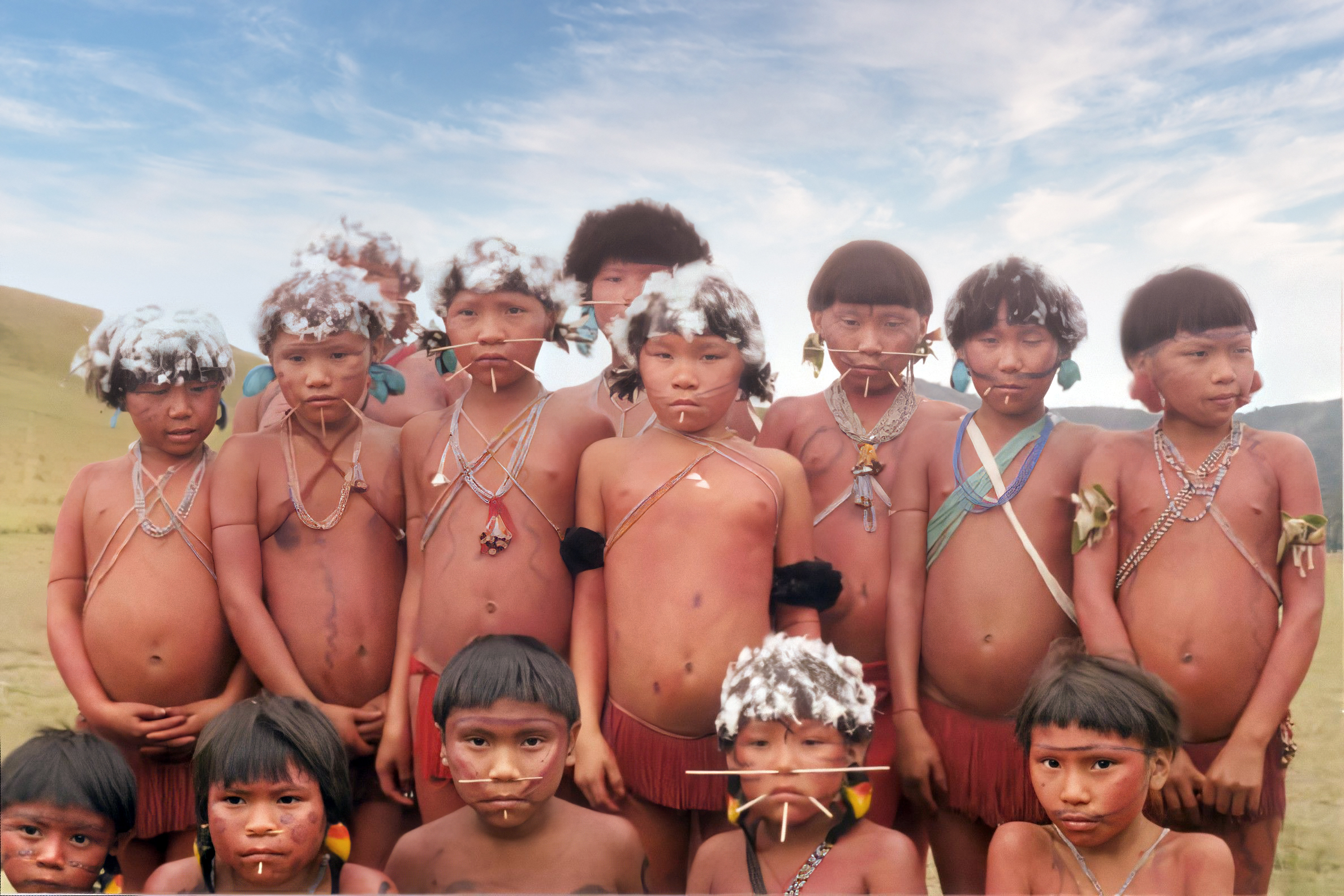A couple of months ago a new paper on population genetics on Venezuela appeared: "A Melting Pot of Multicontinental mtDNA Lineages in Admixed Venezuelans", by Gómez Caraballo et alia. The work has very fascinating insights into our genetic structure. Still, I have some questions about the general method.
 |
| You get these mitochondria from your mum alone |
Scientists used data from Caracas and Pueblo Llano mainly to determine how the native American component was reflected in both groups. The assumption was that new flows of immigrants to Caracas had displaced the Amerindian element there whereas this element would be much stronger in the countryside. Pueblo Llano is a very isolated village in the lowlands of the otherwise very mountainous Mérida state.
I have reported in a couple of previous posts how we Venezuelans are mostly European from the "extreme" paternal side (father's father's father's...) and "mostly" native American from the "maternal" side (mother's mother's mother's), with African American on both sides as well (but less so in general). This study didn't show otherwise, but it focused on the native American part. This is all relative: you can have an African American mtDNA and your mother can look very European and you can have an European Y haplogroup and your dad looks more African or native American (the last one being much less the case in Venezuela, as male Indians were basically out-bred).
Of the 199 samples from Pueblo Llano 177 persons had native American, 8 African American (4%) and 14 European (6%) haplogroups. The native American component in Pueblo Llano is stronger than in Caracas. This is not surprising. The African American component in Pueblo Llano was much smaller than in Caracas, where 20% had African haplotypes. This is not surprising either, we from history: there were more African slaves close to and in Caracas than in the Llanos or Andean regions.
There are more interesting things: they discovered new haplotypes of the native American A and B mtDNA haplogroups. They also confirmed the A2 clade is predominant in the Pueblo Llano area, just as in Caracas...but unlike in two studies carried out on the Yanomamö. The Yanomamö Indians have a completely different language from Caribs, who still inhabit some tiny regions in South Eastern and Eastern Venezuela and who occupied central and most of Northern central Venezuela when the Europeans arrived in 1498 and Arawaks, who still live in some areas in the Amazonas state as well as in Northwestern Zulia and who also occupied some other areas around current Coro. Their language is also quite different from that of the now extinct Timoto-Cuicas, who inhabited most of the Merida area but who rapidly merged with the Spanish settlers.
There is one item I don't find very academic. They write "native American mtDNA component is by far the most prevalent in present day urban Venezuelans (80%), whereas it is much more frequent in Pueblo Llano ( 90%) than in Caracas ( 65%)." The native American component as reflected by mtDNA is indeed clearly prevalent, but "urban Venezuela" cannot be deduced by simply by calculating the mean from the largest city in Venezuela by far and an extremely isolated area that is much smaller than the average Venezuelan town in the interior. Most Venezuelans (about 70% of the total population) live in cities with more than 100 000 inhabitants but less than one million. The population dynamics from the Eastern side of Mérida and the Western side and central valleys are also completely different from the dynamics in Bejuma or Margarita (even considering Margarita inhabitants with all grandparents born in the island). So: I think a more systematic approach needs to be taken in the future to determine "average populations".
Still, this study discovered a couple of new branches in the A and B maternal haplogroups. There is some material that adds to existing databases and that will help us in the future to establish possible migration routes for pre-Colombian South America.
It would be great, among other things, to find the closest matches to the Yanomamö within the Americas and to carry out genetic studies on the Carib groups Pemon and Yekwana to see how distant they are, both by mtDNA and Y chromosome sequences. It could be also very interesting to examine further other groups, like the Arutani Sape, if it is not too late.


No comments:
Post a Comment
1) Try to be constructive and creative. The main goal of this blog is not to bash but to propose ideas and, when needed, to denounce
2) Do not use offensive language
3) Bear in mind that your comments can be edited or deleted at the blogger's sole discretion
4) If your comment would link back to a site promoting hatred of ethnic groups, nations, religions or the like, don't bother commenting here.
5) Read point 4 again